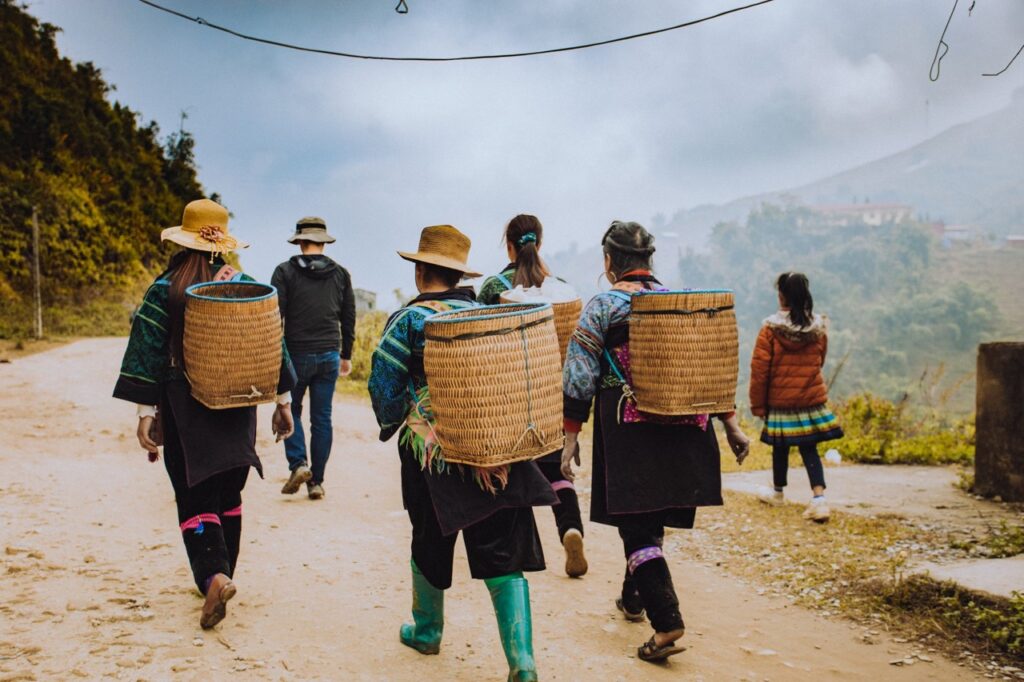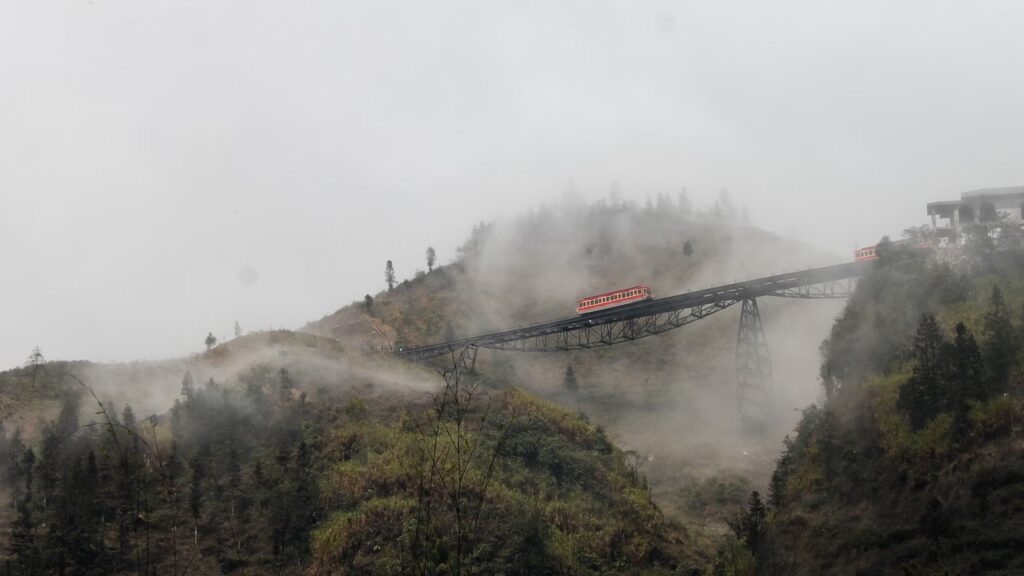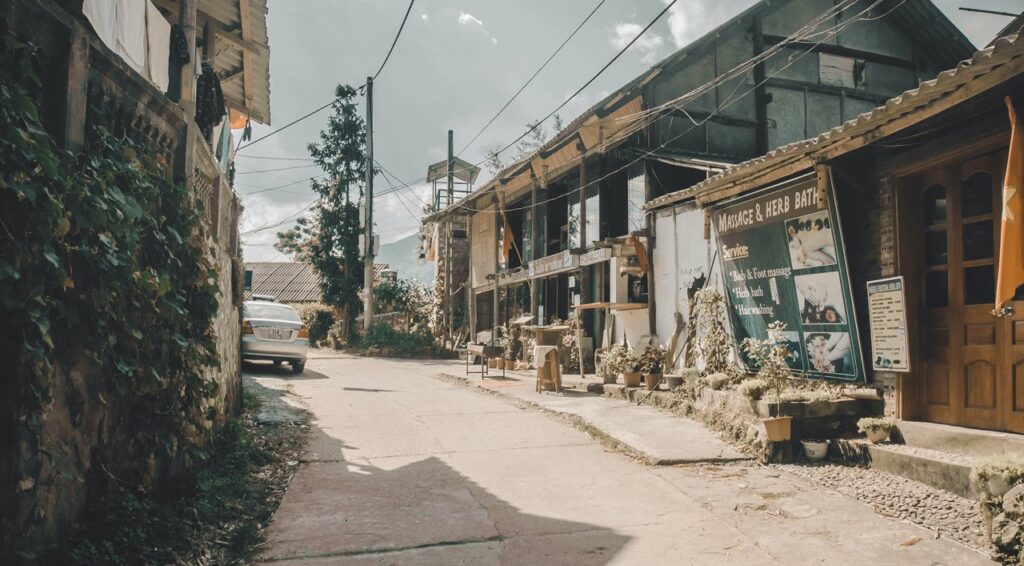A visit to Vietnam is incomplete without immersing yourself in the breathtaking landscapes of Sapa, the jewel of the Lao Cai Province. Home to the majestic Mount Fansipan, also known as the “Roof of Indochina,” and endless rice fields that invite you to embark on an unforgettable trekking adventure. In this comprehensive guide, we’ll unravel everything you need to know about your Sapa trek, from how to get there to what to pack, ensuring an epic journey awaits.
Unveiling Sapa: A Tapestry of Culture and Nature

Sapa, or Sa Pa, stands as the capital of its eponymous district in Vietnam’s north-western border province of Lao Cai. Steeped in significance for the Hmong, Red Dao, and Tay mountain tribes, Sapa has transformed from an agricultural hub to a vibrant tourism destination since the ’90s. Today, it beckons travelers seeking to spice up their Vietnam adventures with enchanting treks through its iconic rice fields.
How To Get To Sapa From Hanoi?
Sapa’s remote location in the northwest of Vietnam adds to its allure but requires careful planning for travelers. When venturing from Hanoi to Sapa, you can consider the following transportation options:
By Sleeper Bus
- Experience comfort with a 2-person or single private cabin bus from Hanoi to Sapa.
- Then take a taxi or bus from Lao Cai station to Sapa, it will take about an hour.
By Luxury Train
- Private operators like Livitrans or Oriental offer tourist carriages.
- Considered luxury trains, though some coaches may be refurbished state railway trains.
- It’s highy recommended that travelers evaluate the value for money before choosing this option.
The Best Season For Trekking in Sapa

Sapa experiences distinct seasons, but trekking is possible throughout the year. Understanding the weather patterns can enhance your trekking experience.
Best Months for Trekking
- August to April is the prime trekking season.
- August offers brilliant views of rice terraces after the rainy season.
- Autumn (September to early December) is popular for moderate temperatures and golden rice fields.
Winter and Snowfall
- Winter (December and January) brings colder temperatures, and snowfall, though rare, might happen.
- Ideal for those seeking a unique experience in the snow-covered landscapes.
Spring (February to April)
- Warmer weather as spring approaches.
- Crisp conditions make March and April ideal for trekking.
Summer Caution (June and July)
- Rainy season with downpours and a chance of typhoons.
- Not the most ideal for trekking, but some adventurous hikers still explore the region.
How Long Is The Trek?
You can tailor your trekking adventure to your preferences, considering the duration and difficulty of treks. The duration of the trek can total be customized based on your own schedule.
Average Trek Duration- A typical Sapa trek lasts two days, offering a good introduction to the region.
- Options for three or four-day treks are available for those with more time.
Popular Routes
- Common treks include Ta Van and Ban Ho, providing insights into local culture.
- Longer treks may combine Muong Hoa Valley and Y Linh Ho village.
Get to Know Local Minorities of Sa Pa

Sapa is home to various ethnic groups, each contributing to the vibrant cultural mosaic of the region. Here are some interesting facts about the ethnic minorities in Ha Giang.
H’mong (Miao)
- Recognizable by their red costumes, the H’mong are scattered across China, Laos, Thailand, and Myanmar.
- Easy to identify, they add to the cultural richness of Sapa.
Dao
- Also known as Man or Yao, the Dao have a traditional writing system with Chinese characters.
- Present in Vietnam for centuries, they contribute to the ethnic diversity of Sapa.
Tay
- The Tay ethnic group, the third-largest minority in Sapa, showcases distinctive dark indigo clothing.
- Concentrated in southern communities like Ho village, they add a unique flavor to Sapa’s cultural tapestry.
How To Climb Fansipan Mountain?
For those seeking a more challenging adventure, climbing Fansipan Mountain offers a rewarding experience. Fansipan is the highest peak in the Indochinese Peninsula, stands at 3,147 meters. If you have at least 3 days, you can skip the cable car and opt for a trek to enjoy lush forests and spectacular views. The trek to Fansipan begin at Tram Ton Pass, the traditional starting point for Fansipan treks. While solo treks are possible, it is recommended to book a guide for safety and navigation.
What Should I Pack For My Trekking in Sapa trip?
Prepare for your Sapa trek by packing wisely, considering the essentials:
Comfortable Shoes- Pack a pair of comfortable shoes suitable for trekking.
- Hiking shoes are ideal but not mandatory.
30-Liter Backpack- Bring a backpack with daily necessities for the trek.
- Include a rain jacket for unpredictable weather.
Quick-Drying Garments- Opt for quick-drying garments for basic clothing.
- Consider the weather conditions and dress accordingly.
Sleeping Gear- Mattress and sleeping bag or blankets are provided by homestay families.
- Confirm with your trekking company to ensure proper arrangements.
Conclusion: Your Epic Sapa Adventure Awaits!
If you are in Vietnam, you should consider a journey to Sapa, Vietnam, where breathtaking landscapes, vibrant cultures, and unforgettable trekking experiences await. Whether you choose the tranquility of homestays, the challenge of Fansipan, or the cultural richness of local minorities, Sapa offers a tapestry of adventures for every traveler. Plan your trek, pack your bags, and immerse yourself in the magic of Sapa – a destination that promises memories to last a lifetime.
Ready to make Sapa your next trekking destination? Explore the wonders of Vietnam’s northwest and create memories that will stay with you forever with YESD Travel today! Sapa, or Sa Pa, stands as the capital of its eponymous district in Vietnam’s north-western border province of Lao Cai. Steeped in significance for the Hmong, Red Dao, and Tay mountain tribes, Sapa has transformed from an agricultural hub to a vibrant tourism destination since the ’90s. Today, it beckons travelers seeking to spice up their Vietnam adventures with enchanting treks through its iconic rice fields.
Sapa, or Sa Pa, stands as the capital of its eponymous district in Vietnam’s north-western border province of Lao Cai. Steeped in significance for the Hmong, Red Dao, and Tay mountain tribes, Sapa has transformed from an agricultural hub to a vibrant tourism destination since the ’90s. Today, it beckons travelers seeking to spice up their Vietnam adventures with enchanting treks through its iconic rice fields.
 Sapa experiences distinct seasons, but trekking is possible throughout the year. Understanding the weather patterns can enhance your trekking experience.
Best Months for Trekking
Sapa experiences distinct seasons, but trekking is possible throughout the year. Understanding the weather patterns can enhance your trekking experience.
Best Months for Trekking
 Sapa is home to various ethnic groups, each contributing to the vibrant cultural mosaic of the region. Here are some interesting facts about the ethnic minorities in Ha Giang.
H’mong (Miao)
Sapa is home to various ethnic groups, each contributing to the vibrant cultural mosaic of the region. Here are some interesting facts about the ethnic minorities in Ha Giang.
H’mong (Miao)
